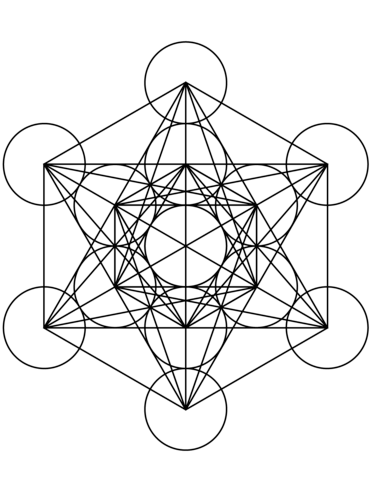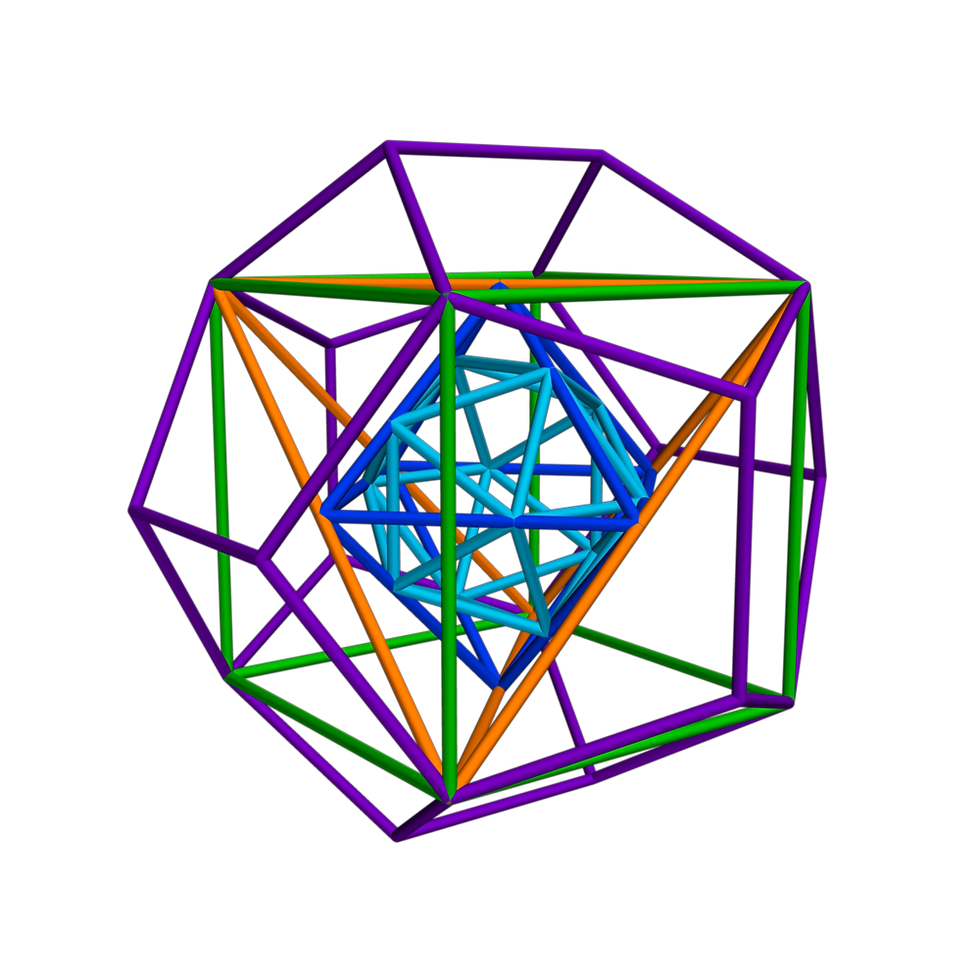The Platonic solids are special geometric shapes that were written about by the Greek philosopher Plato over two thousand years ago. Each one embodies a uniqueness. As you might imagine, much has already been written about the Platonic solids. We are interested in them because they are all nested within Metatron’s Cube.

The five Platonic solids are all contained within this two-dimensional image of Metatron's Cube that is shown above. When you attempt to isolate the Platonic solids, they are, of course, also shown in two-dimension, however, they are drawn in three-point perspective. The Platonic solids are all three-dimensional figures.
The first Platonic solid that we are interested in is the tetrahedron. The tetrahedron has four sides. A regular tetrahedron has four faces and each face is an equilateral triangle. Equilateral triangles have all three sides the same length. See the image below.

Metatron’s cube has at least two regular tetrahedrons in it. Let’s begin with tracing the larger tetrahedron from the two-dimensional image of Metatron’s cube. You might notice that there are tetrahedrons everywhere. Some are smaller than the others. The larger ones tend to be easier to see. Some are inverted. There is a smaller tetrahedron that points to the center of each circle.

Click on the video below which focuses on the larger tetrahedron to see the animation of it turning into a three- dimensional shape.
The three-dimensional model of Metatron’s cube that we are working to build is shown below. This model is only a partial model since it only shows one example of each of the Platonic solids. It is important because it shows the nesting of the Platonic solids within each other. This nesting allows them to freely rotate within Metatron’s cube. It is the rotation of the Platonic solids that generates the energy within Metatron’s cube.

Commenti